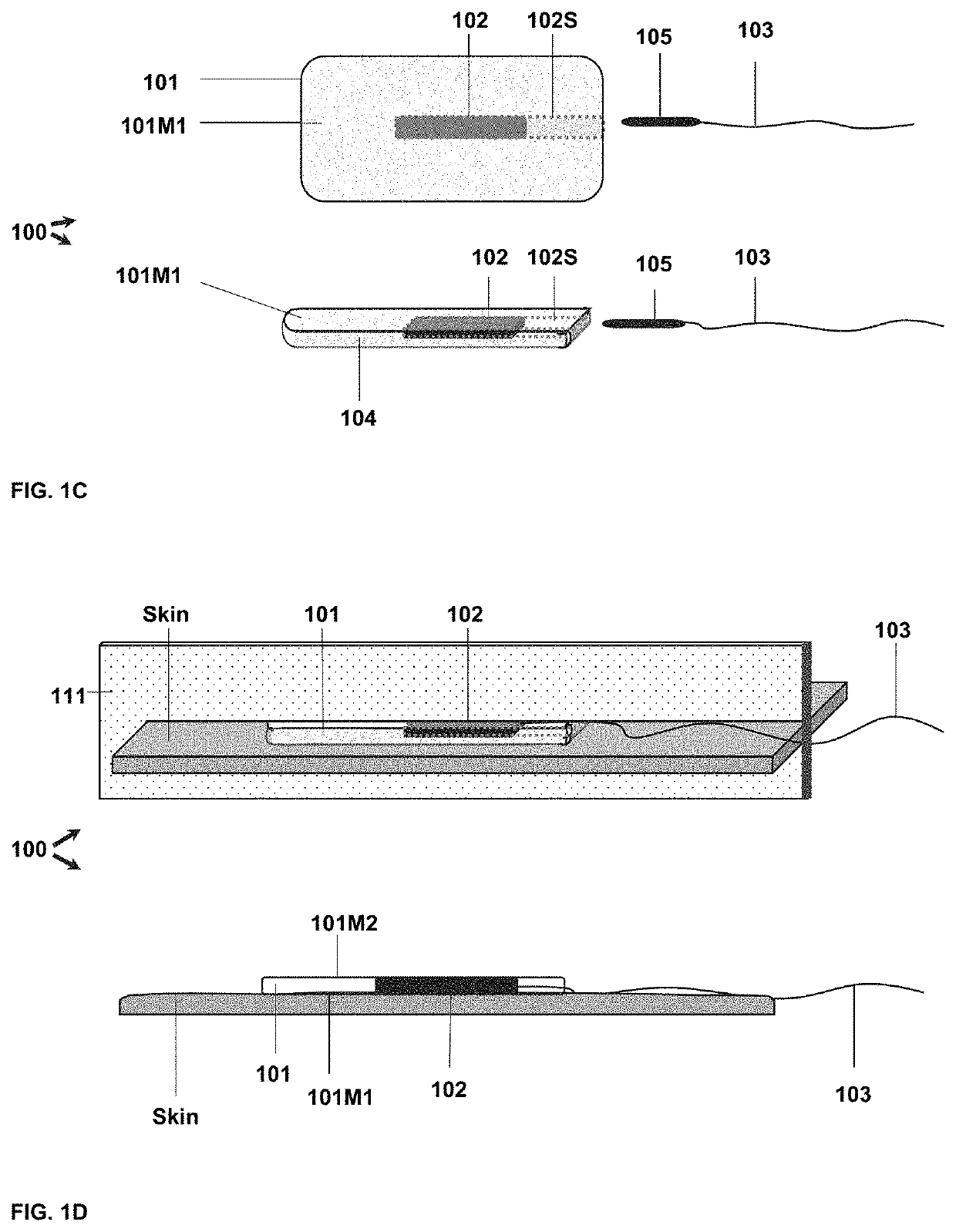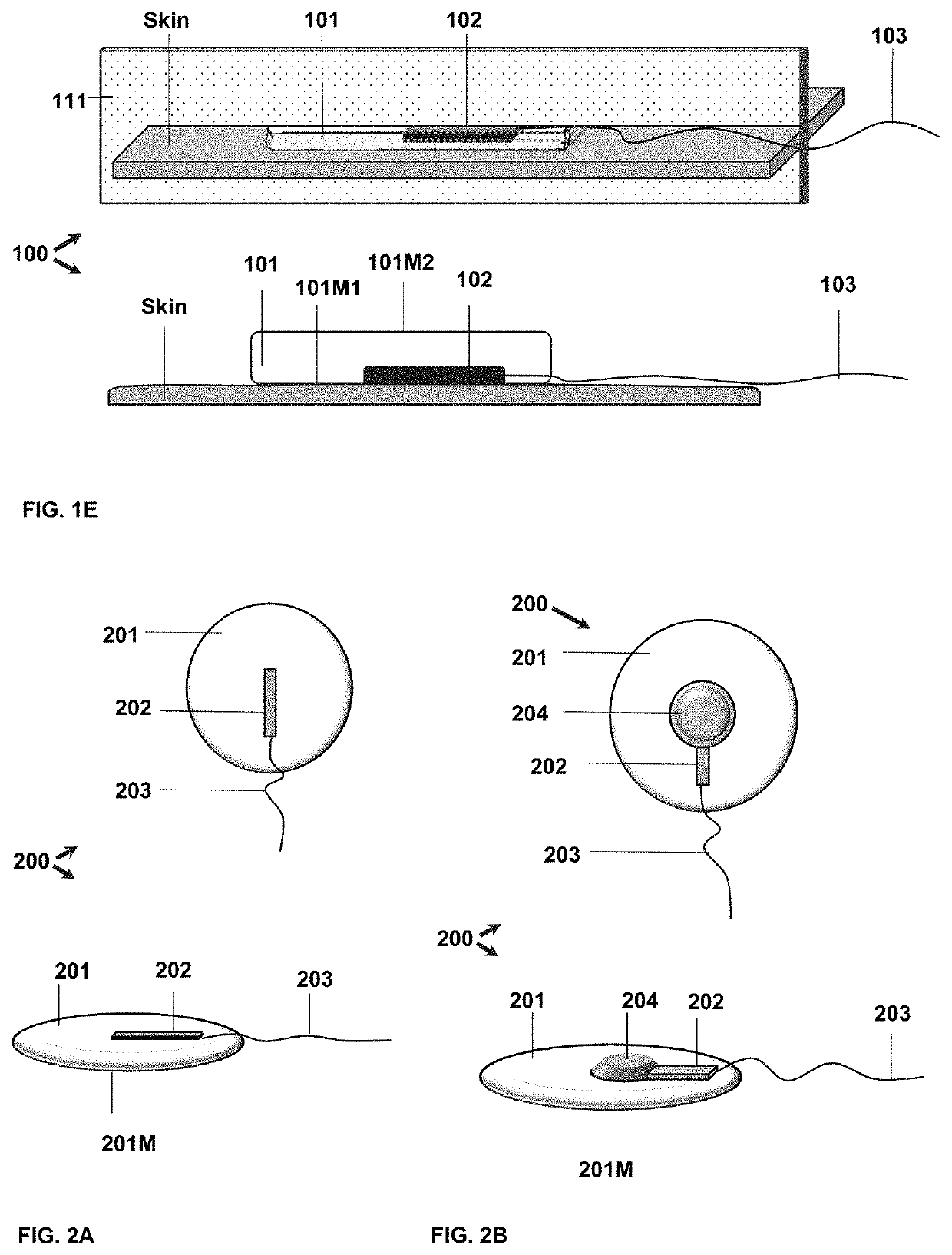Tracking cardiac forces and arterial blood pressure using accelerometers
a technology of accelerometer and cardiac force, which is applied in the field of biomedical sensors and sensor manufacturing processes, methods and systems for testing and monitoring cardiovascular activity, can solve the problems of difficult determining the optimal timing of pacing stimuli, difficult detection of mild abnormalities, and limited bcg, so as to facilitate the detection of aortic aneurism, facilitate detection of changes, and facilitate detection. separation and tracking
- Summary
- Abstract
- Description
- Claims
- Application Information
AI Technical Summary
Benefits of technology
Problems solved by technology
Method used
Image
Examples
Embodiment Construction
[0187]This disclosure contains some representative embodiments, which are provided primarily for illustrative purposes and which are not intended to limit the broad aspects of the invention. To that extent, elements and limitations that are disclosed, for example, in the Abstract, Summary, and Description of the Preferred Embodiments, but not explicitly set forth in the claims, should not be incorporated into the claims, singly or collectively, by implication, inference, or otherwise.
[0188]Any and all combinations of the features, functions, and concepts discussed in detail herein are contemplated as being part of the inventive subject matter (provided such concepts are not mutually inconsistent). For example, although differing in appearance, the individual systems and devices and functional componentry depicted and disclosed herein can each take on any of the various forms, optional configurations, and functional alternatives described above and below with respect to the other dis...
PUM
 Login to View More
Login to View More Abstract
Description
Claims
Application Information
 Login to View More
Login to View More - R&D
- Intellectual Property
- Life Sciences
- Materials
- Tech Scout
- Unparalleled Data Quality
- Higher Quality Content
- 60% Fewer Hallucinations
Browse by: Latest US Patents, China's latest patents, Technical Efficacy Thesaurus, Application Domain, Technology Topic, Popular Technical Reports.
© 2025 PatSnap. All rights reserved.Legal|Privacy policy|Modern Slavery Act Transparency Statement|Sitemap|About US| Contact US: help@patsnap.com



